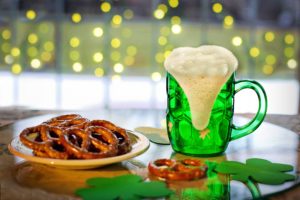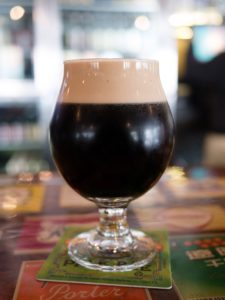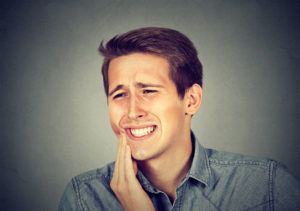 Although St. Patrick’s Day is often viewed as a day of good luck, oftentimes, your teeth aren’t so lucky. Studies show that the day after St. Patrick’s Day, dental practices see a jump in appointments by an average of 64%. 10 states even see a jump of 100% or more, with patients attributing their dental emergencies to bar fights and alcohol-induced accidents.
Although St. Patrick’s Day is often viewed as a day of good luck, oftentimes, your teeth aren’t so lucky. Studies show that the day after St. Patrick’s Day, dental practices see a jump in appointments by an average of 64%. 10 states even see a jump of 100% or more, with patients attributing their dental emergencies to bar fights and alcohol-induced accidents.
We want all of our Greensburg patients to have a good time this St. Patrick’s Day, but we also want everyone to stay safe and healthy. This year, keep these St. Patrick’s Day dental warnings in mind to keep you out of the dental chair on March 18th.
Watch Out For Green Beer
A lot of bars, pubs and restaurants mark this fun holiday by serving cheap beer dyed with green food coloring. It may seem like the perfect way to celebrate St. Paddy’s Day, but this novelty beer is a bad idea for your teeth.
Just a few sips of green beer can dye your teeth a scary shade of green. It’s not permanent, but you can expect to smile a green-colored grin for the rest of the day.
If you end up overdoing it on green beer, your teeth can turn an even darker shade of green. Stains from green beer, red wine and coffee can make your beautiful and bright smile turn dull. If you wake up on March 18th with green teeth, schedule an appointment with your dentist. They can determine which whitening treatment is right for you and discuss ways to avoid staining in the future.
Beware Of Stouts
 Stouts are popular on St. Patrick’s Day. These darker beers contain roasted malts and barley, and while these components make beer tasty, they also have a tendency to stain teeth. Not only are stouts strong in flavor, but they also have a concentrated, dark color which rubs off on enamel and causes it to look grey, blue or yellow. Some stouts are brewed with plums or dark berries for flavor which are packed with natural staining agents.
Stouts are popular on St. Patrick’s Day. These darker beers contain roasted malts and barley, and while these components make beer tasty, they also have a tendency to stain teeth. Not only are stouts strong in flavor, but they also have a concentrated, dark color which rubs off on enamel and causes it to look grey, blue or yellow. Some stouts are brewed with plums or dark berries for flavor which are packed with natural staining agents.
If you enjoy dark beers regularly, you’re putting your teeth at risk of developing stains. Stained teeth can give the impression of both age and poor hygiene, which we know our Greensburg patients want to avoid. Even if you brush and floss regularly, frequently consuming stain-causing beverages can darken the shade of your teeth.
Check The Acidity
Beer clocks in at 4 on the pH scale, which means that in comparison to water, it has a high level of acidity. Acids are notorious for attacking enamel, the hard outer layer of our teeth designed to protect them from decay. When acids continue to attack the enamel, it can wear down and lead cavity formation.
The acids you consume can attack your enamel for up to 20 minutes, and the attack restarts every time you take another drink. If you’re like most people and continue to sip on a beer throughout your entire St. Patrick’s Day celebration, you’re exposing your teeth to an acid bath all night long, which can do a number on your teeth.
The best way to combat this is by brushing your teeth. When intoxicated, it’s tempting to fall right into bed after a long night out and forget about your oral hygiene routine. If you do this, you’re letting those acids and plaque harm your enamel all night long. Make sure to brush your teeth for two minutes before you head to bed—you’ll be thanking yourself when you wake up in the morning with a fresh smile!
Stay Hydrated And Prevent Dry Mouth
While it’s a good idea to sip on water throughout a night of drinking to prevent from becoming too intoxicated, water is also essential for combating dry mouth. Saliva is an important player in your oral health arsenal. A constant flow of saliva ensures that bacteria and food particles get washed away, preventing them from attacking your teeth.
Dry mouth is a common side effect of alcohol consumption. After a night of drinking, your mouth is usually parched, which means that the bacteria on your teeth are free to produce enamel-attacking acids.
Dry mouth is also an agent of bad breath; the germs in your mouth cause halitosis. Without saliva, the odor-causing bacteria cannot be washed away.
Know What To Do In Case Of Emergency
 Sometimes, accidents just happen. If you go a little too far on St. Paddy’s Day and end up with a knocked out tooth, it’s important to know how to keep the damage to a minimum. There are 5 steps you should take if you knock a permanent tooth out of place:
Sometimes, accidents just happen. If you go a little too far on St. Paddy’s Day and end up with a knocked out tooth, it’s important to know how to keep the damage to a minimum. There are 5 steps you should take if you knock a permanent tooth out of place:
1. Pick up the tooth by the chewing surface, not the root.
Immediately, find your tooth and pick it up. Do not leave it at the site of the accident. Handle the tooth with extreme care and try not to touch the root to minimize damage.
2. If dirty, gently rinse the tooth with water. Do not:
- Use soap or chemicals
- Scrub the tooth
- Dry the tooth
- Wrap the tooth in a tissue or cloth
3. Reposition the tooth in the socket immediately if possible.
The sooner the tooth is replaced, the greater the likelihood that it will survive. To reinsert it, carefully push it into the socket with your fingers, or position above the socket and slowly close your mouth. Hold the tooth in place with your fingers or by gently biting down on it.
4. Keep the tooth moist at all times.
Do not leave the tooth outside of the mouth to dry, as this can cause irreparable damage to the tooth. If you cannot put the tooth back into the socket, put it in:
- An emergency tooth preservation kit
- Milk
- The mouth between the gum and cheek
5. See a dentist as soon as possible
Ideally, try to get to a medical professional within 30 minutes of the accident in order to save the tooth. If this happens in the middle of the night, and your regular dentist isn’t open, find an emergency dentist or simply head to the emergency room. If you wait until the next day, you probably won’t be able to save your tooth and will need to seek a restorative treatment.
Want More St. Patrick’s Day Dental Tips? Contact Our Office
Here in Greensburg, there are plenty of ways to celebrate St. Patrick’s Day. We want our patients to enjoy the holiday in a safe and healthy way. Keep these dental health warnings in mind while you’re at your celebration to stay out of the dentist’s chair on March 18th! For more information and tips, please contact our office to schedule an appointment.



